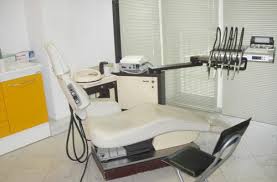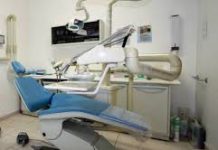Dental restoration.
With tooth restoration we refer to a several kind of procedures that differ in their.
It may be used in dentistry to restore a tooth in all its parts, structures and functions: in this case restoration is needed when a tooth is damaged by cavities, diseases or trauma and the objective of the care is to keep teeth otherwise be destroyed by caries; sometimes deterioration may be caused intentionally during tooth preparation for cosmetic treatments to improve the physical integrity of the restorative material.
 Missing teeth. Tooth restoration can be used to replace a missing tooth.
Missing teeth. Tooth restoration can be used to replace a missing tooth.
A root canal filling is considered a restorative technique used to fill the space where the dental pulp normally resides.
Usually tooth restorative treatments are divided in two types: directs or indirects. Direct treatments involve the use of dental filling into a prepared tooth cavity; cavities can be superficial or deep. In the first case the dentin and enamel affected by caries are removed and the tooth is filled with special materials, usually composite materials. In deep cavities there may be involvement of the pulp of the tooth and thus a root canal treatment may be necessary.
Indirect restoration provides for the dentist that takes a mold of the patient’s teeth and then restorations are prepared in a laboratory; while the indirect restoration is being prepared, a temporary restoration may be apply to cover the prepared part of the tooth.
Dental treatments.
The most common tooth restoration treatments are for example crowns, bridges, inlays, onlays, veneers, implants, dentures. Bridges, implants and dentures are options to replace missing tooth.
Crowns are very popular: this device is like a cup, customized for each patient, placed on tooth to protect it.
It is used in cases of tooth cracks, excessive tooth decay, damaged tooth protection, teeth grinding, missing teeth, an improper bite resulting from the natural wear and tear produced by aging.
Inlays and onlays are alternatives to full coverage dental crowns or can be used in place of traditional dental fillings to treat tooth decay or structural damage; inlays and onlays are fabricated indirectly in a dental lab before being fitted and bonded to the damaged tooth by the dentist.
Tooth restoration. The materials.
Crowns, inlays and onlays can be made from a variety of materials. Gold is still used for some inlays, but in recent years other materials like porcelain and composite resin are preferred from a biomimetic approach to restoring decayed, fractured or broken teeth.




